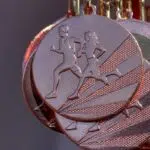National Write a Letter of Appreciation Week is celebrated every year on March 1 to 7. As social media and technology grow as a quicker and more effective means of communication, handwritten notes appear to be a dying art. A handwritten letter can be more personal and emotional than words on a screen for those who want to express gratitude to those they care about. Letter writing has played a part in the reproduction of writing as art throughout history, in addition to being a medium of communication and a repository of information. National Write a Letter of Appreciation Week encourages people to write a personal message, mail it, and express gratitude to those who have influenced their life.
History of National Write a Letter of Appreciation Week
Letters have existed throughout history, from ancient India, Egypt, and Sumer, through Rome, Greece, and China, to the current day. Letters were used to self-educate throughout the 17th and 18th Centuries. Throughout the 17th and 18th Centuries, letters were utilized to self-educate. Information, news, and pleasantries were mostly communicated through letters. Writing letters served as a technique for certain people to learn critical reading, self-expression, polemic writing, and exchanging ideas with people who shared similar interests. Metal, lead, wax-coated wooden tablets, pottery shards, animal skin, and papyrus were among the materials used to write letters in the ancient world. Letters have generally been written on paper in recent years, both handwritten and typed.
Even in ages and regions where literacy was lower, illiterate people could pay literate people to compose letters to and read letters from distant contacts. Letters were significant even in the period of telegrams and telephones, until fax and email further eroded their primacy, especially since the turn of the 21st Century. As communication technology has advanced in recent history, postal letters on paper have been less important as a routine means of communication. Extant letters from past eras are an important type of source material in historiography because of the timelessness and universality of letter writing (the methodology of historians).
For the first time, these ‘private’ letters were published during this historical period to create and retain literary importance. Just as social media channels now allow modern celebrities to present versions of their intimate lives for the public to see and read all about, early modern and 18th-century figures also carefully built themselves in their letters for audiences to be excited to read these written works. Today, emails and, messages are the primary mode of communication, with letters saved for special occasions. Given their rarity, letters are now even more meaningful than ever.
National Write a Letter of Appreciation Week timeline
The printing press drastically improves the postal system.
Letters become popular and are even put together into novels.
Alexander Pope becomes one of the first people to publish his letters.
Prepayment stamps are introduced, making letter correspondence easier.
National Write a Letter of Appreciation Week FAQs
How is a letter written?
There are different formats for different types of letters. A formal letter is structured in a different way than an informal letter.
What are the different types of letters?
There are three main categories of letters — formal, informal, and semi-formal.
How do you start a letter?
Regardless of the type of letter, it is always good to begin a letter with some sort of salutation.
National Write a Letter of Appreciation Week Activities
Write a letter of appreciation
This one is a no-brainer. Take some time out and write a letter of appreciation for someone (or some people) in your life. From a loved one to a helpful coworker, let others know that you appreciate them.
Make it personal
Add personal touches to your message. Reminisce about a happy time when this individual made a positive impression on your life or made a terrible day better. Express your gratitude and admiration by digging a bit deeper.
Get creative with it
While a letter is focused on the wording of it, you can still get creative with it. Use funky handwriting, try out cursive, use cute stationery or even get creative with the words and write a poem. Have fun with it!
5 Interesting Facts About Letters
They can be long
The longest letter ever written was 3,200 feet long and took a month to write.
They can be pricey
A letter from a sitting president is worth approximately $7000.
They can be informative
Today, famous old letters are referred to for historical purposes.
They weren’t always convenient
About 5,000 years ago, envelopes were made out of baked clay.
They were not affordable
Back in the day, paper was so expensive that people sealed their letters with wax instead of buying envelopes.
Why We Love National Write a Letter of Appreciation Week
It reminds us to share
We often get caught up in the hustle and bustle of life and can forget to tell loved ones how we feel. This week reminds us to let others know we wish them well.
It encourages us to enjoy the little things
Letters are made not just for big occasions or communications, but for little things as well. Taking out a minute and sharing a letter of appreciation can make someone’s day better.
It’s adorable
A week dedicated to something that helps us share and receive love and wishes? Yes, please.
National Write a Letter of Appreciation Week dates
| Year | Date | Day |
|---|---|---|
| 2026 | March 1–7 | Sunday–Saturday |
| 2027 | March 1–7 | Monday–Sunday |
| 2028 | March 1–7 | Wednesday–Tuesday |
| 2029 | March 1–7 | Thursday–Wednesday |
| 2030 | March 1–7 | Friday–Thursday |














































































































































